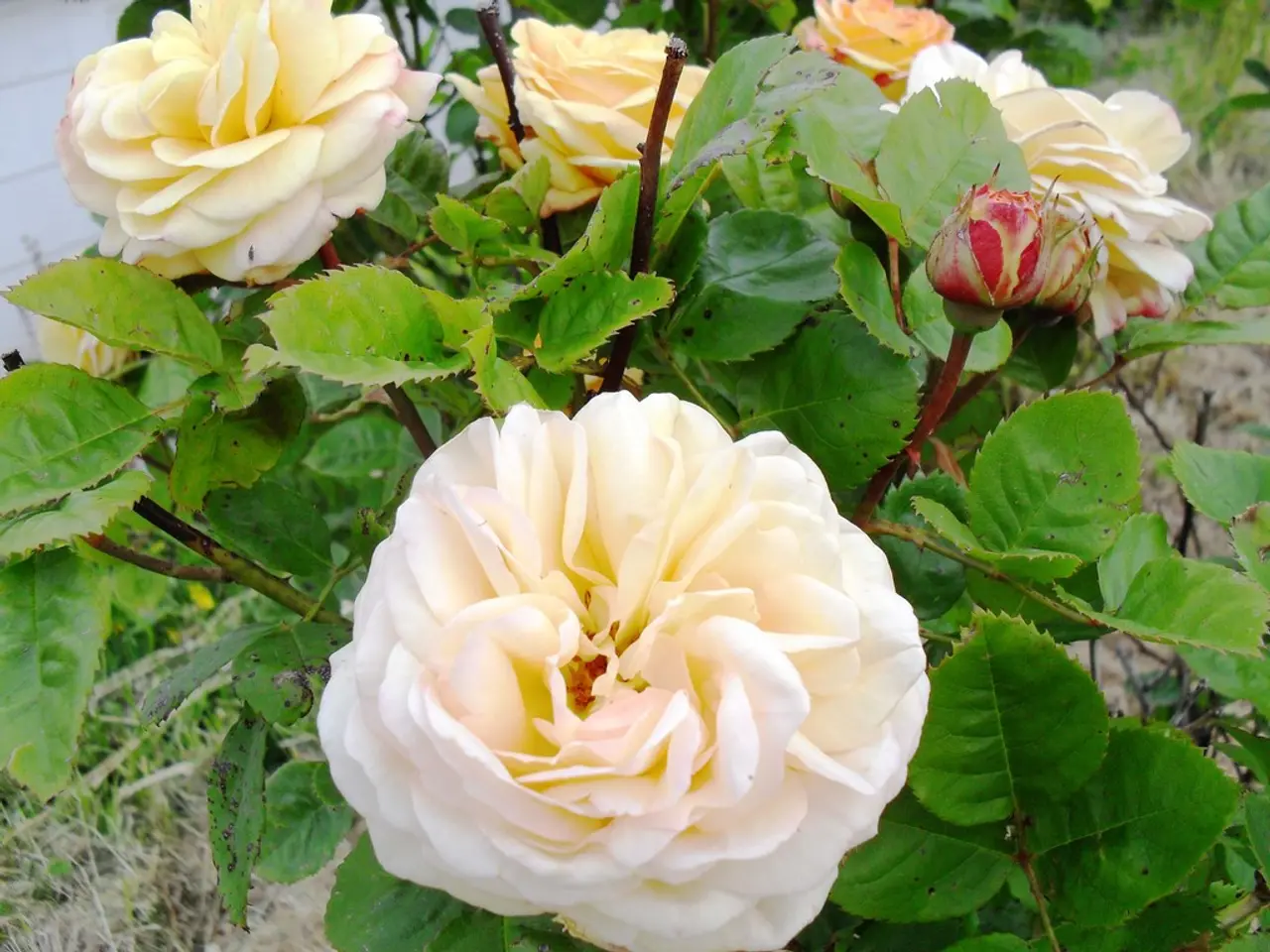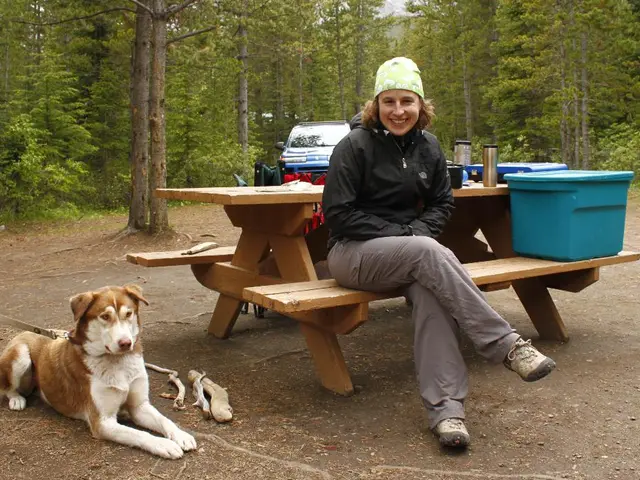Concerned about pesky weeds? Discover eight commonly found varieties, along with proven methods for their eradication.
In the realm of gardening, keeping common weeds at bay is a constant challenge. Here are some strategies for controlling weeds like purslane, crabgrass, Canada thistle, bindweed, prostrate spurge, yellow salsify, lawn burweed, and pokeweed.
Purslane
Purslane is known for its tenacity, with fragments that can regrow, making it difficult to eradicate. Mechanical control methods such as digging out entire plants or flaming can help, but using mulch and weed barrier fabrics (thick black plastic or landscape fabric) can prevent its establishment. Pre-emergent or selective herbicides may also be used following label instructions.
Crabgrass
Crabgrass thrives in bare soil during summer. To control it, maintain a healthy, dense lawn through regular mowing, reseeding bare spots, applying mulch, and consistent light irrigation. Use selective pre-emergent herbicides before seeds germinate or post-emergent herbicides during growth.
Canada Thistle and Bindweed
Both weeds are perennial and spread vigorously via roots and rhizomes, making hand-pulling generally ineffective unless the entire root system is removed. Systemic herbicides targeting perennials are recommended because they kill the roots. Non-selective herbicides like glyphosate may be necessary for severe infestations, often followed by reseeding lawn areas.
Prostrate Spurge
As a low-growing broadleaf weed, it can be controlled by physical removal and maintaining mulch layers to block sunlight. Spot treatment with selective herbicides may be used if appropriate.
Yellow Salsify, Lawn Burweed, Pokeweed
These weeds often have tough root systems. Digging out entire plants helps physically remove them. Using systemic herbicides that translocate to roots can be effective for long-term control. Mulching can help suppress seedling emergence.
General, environmentally friendly approaches effective across many weeds include hand pulling or digging, especially before seed set, mulching with about 7 cm thickness to block light and inhibit seedlings, vinegar (acetic acid) spray on young weeds on sunny days for non-toxic spot control, and salt applied with caution at weed bases to degrade soil locally and deter weeds, but with care to avoid harming nearby desired plants.
For tough perennial and grassy weeds, selective systemic herbicides containing active ingredients like fenoxaprop-p-ethyl or sethoxydim provide targeted control without harming lawn grasses, while spot applications of non-selective herbicides such as glyphosate are a last resort.
In summary, an integrated strategy of preventive mulching, maintaining healthy plant cover, manual removal, and judicious herbicide use tailored to weed species and growth habits yields the most effective control of these common garden weeds.
Additional Information:
- Pokeweed can grow up to 10ft (3m) tall and has light green leaves, clusters of white flowers, and dark purple berries.
- Maintaining a healthy lawn with a regular mowing routine or a weed eater can deter the establishment of crabgrass.
- Mulches and weed barriers like thick black plastic are more effective for controlling Common Purslane.
- Crabgrass seeds can remain dormant and viable for three years in the soil.
- Don't bother to try and dig bindweed out; a better idea is to outwait the plant by snipping it off at soil level.
- The use of non-selective chemical herbicides to kill root systems is the only way to eradicate bindweed.
- Canada Thistle is a noxious weed in 43 states, with a deep taproot, alternate spiny or toothed green leaves, and smooth stems.
- Canada Thistle seeds remain viable in the soil for up to four years.
- The Garden Guru Hori Hori Knife can be used to dig up yellow salsify plants.
- Pre-bloom mowing through the growing season, combined with herbicide applications in the fall and early spring, can help control Canada Thistle.
- Larger plants of lawn burweed can be pulled out at the root prior to seeding.
- A heavy and regular application of mulch can help prevent the establishment of bindweed.
- Crabgrass is an annual warm season grass that tends to establish in barren areas of lawn during the hot summer months.
- Mistakes with mulching can aid the establishment of yellow salsify.
- Yellow salsify grows up to 3ft (1m) in height and 2ft (60cm) across, with gray/green leaves and seed puffballs.
- Scotts Nature Scapes Mulch from Lowes can help prevent the establishment of prostrate spurge.
- A deep layer of mulch can prevent the establishment of pokeweed.
- Lawn burweed has needle-like seeds that can stab unsuspecting walkers' feet.
- Bindweed is incredibly resilient, making controlling it notoriously difficult.
- Common Purslane is a major weed found in over 50 crops and lawns, with oval, fleshy, succulent-like leaves and tiny yellow blooms.
- A selective pre-emergent herbicide prior to germination, or a post-emergent herbicide during the growing phase, can help control crabgrass.
- Mechanical cultivation is often tricky for Common Purslane, even with the best weeding tools.
- Prostrate spurge is a low growing broadleaf annual weed that forms dense mats of purple to green foliage.
Gardening and maintaining a home-and-garden lifestyle often involve dealing with common weeds such as purslane, crabgrass, Canada thistle, bindweed, prostrate spurge, yellow salsify, lawn burweed, and pokeweed in the home-and-garden setting. For instance, manipulating the landscaping can help control purslane and crabgrass by using mulch and weed barrier fabrics, or maintaining a healthy, dense lawn for crabgrass. On the other hand, some perennial weeds like Canada Thistle and bindweed can be more challenging to manage, requiring the use of systemic herbicides to target their roots or non-selective herbicides for severe infestations.




